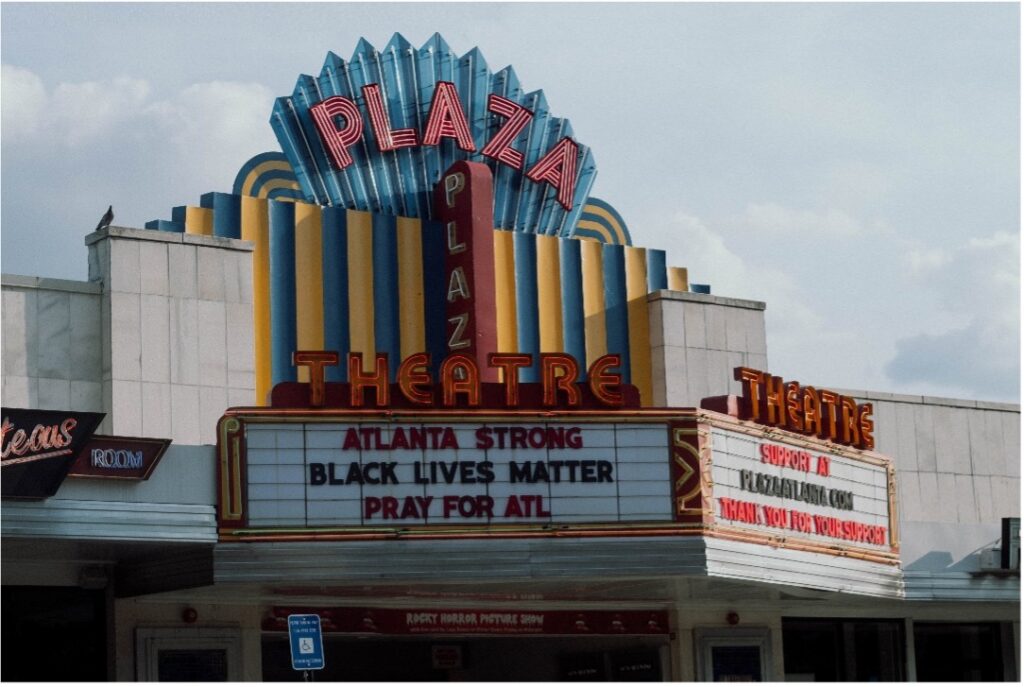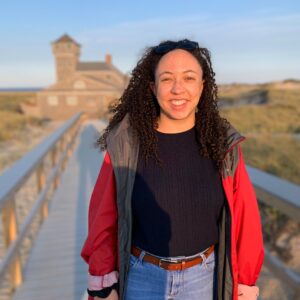Listening, Histories, and the Anthropocene
Conferences are inflection points: moments where energies come together and reflect outward in new directions. The following is a report of the May 2022 “Ruptures and Convergences” Conference, hosted by the Music Studies and the Anthropocene Research Network. In the following recap of conference proceedings, I frame the comings and goings of energies with two sections that meditate on intersections of music and environmentalism. This review is intended as a partial state of the field, as journal entries, and as prompts for further action.
Past Presents/ce
Pandemic-era concerns with racial justice, public health, and economic instability have produced new realizations about listening to the world. In the summer of 2020, Atlanta looked largely unchanged, but its soundscape told otherwise. Like many living in urban areas, I found the hush of the city uncanny. The vehicle traffic sounds fell away, leaving room for choruses of birdsong, squirrels, and buzzing bees outside my bedroom window. This also left room for my television and social media feeds to become overwhelmingly noisy places full of media cycles tracking supply chain breakdowns, election campaigns, and Black Lives Matter protests. Hot-lanta’s temperatures even seemed audible as heat sizzled concrete and drew children to the neighborhood pool.

Image of the Plaza Theatre, one of Atlanta’s oldest movie theaters. The theater is located in Midtown, a few miles from John Lewis Freedom Parkway and one of the city’s Martin Luther King Jr. monuments. Photo by Janelle Hiroshige, 2020 (Unsplash).
I’ve always had more of a world-hearing than a worldview, largely owed to my introversion and being surrounded by my father’s ear-trained musicianship. But the last several years have altered my use of this aural apparatus. With sociopolitical unrest and mental health difficulties centered in our lives, acts of cultural production (like music) have supported communal emotional needs and moved us toward worthy causes. I added diverse voices to my bookshelves and playlists and I grew more attuned to the inner voice guiding my scholarship as a young, multiracial graduate student. In the wake of these shifts, I knew that my eventual dissertation topic must address questions of deciphering who and what to listen for in histories of music and sound while also accounting for how my world-hearing interacts with the many environments I call home.
Music studies is working through these concerns, too, as the field wrestles with our collective realizations about aurally communing with the world. This is true even as environmental movements have long been tinged with flavors of audibility. These include the nature-inflected poetics of protest music, Germanic Lieder, or francophone mélodies; the orchestral textures and onomatopoeia used to represent winds and waters; the traditional instrument-making practices with organic materials; and silent meditations in outdoor spaces. In striving to keep pace with society’s shifting discourse regarding ongoing tense political climates and environmental precarities, we in music studies are confronting big questions about power, justice, and sustainability. How do we do better by people and the planet? What does it mean to sustain livable futures? What can we do?
The Music Studies and the Anthropocene Network in Review
The hegemonic frame for grappling with climate change has been dominated by a romantic, usually masculine perspective, and the earliest explicit musical engagements with environmentalism relied on this literature. Rachel Carson, in her landmark Silent Spring (1962), is motivated by the eerie silence of ecosystems rife with chemical pollution. In the 1970s, R. Murray Schafer and his team theorized soundscapes through sound mapping projects known as the World Soundscape Project (WSP). Descendant fields like acoustic ecology and bioacoustics remain fruitful areas today for exploring the extent to which we can hear environmental changes over time.
Moving forward, ecomusicology proclaimed its dedication to “the study of music, culture, and nature in all the complexities of those terms” in 2011. Even as this subdiscipline has received pushback and has thus not taken hold formally, the last decade has seen innovative studies about musical and sonic invocations of environments, nonhumans, and natural spaces. A handful of such studies include colonial narratives of Indigenous encounter in Colombia, the music industry’s implication in plastic pollution, and relationships among sonic cultures and theories of biological evolution. Sociologist Dorceta Taylor receives credit for coining the term environmental racism, which investigates racial histories of industrialization in waste removal systems and city planning. Discussions of racialized environments are echoed in elucidations of phenomena like sonic color lines or the “Black noise” of urban hip-hop. Beyond these academic ventures, the intersectional environmentalist collective and the Green Dreamer podcast amplify scientists, activists, artists, and policymakers who identify across a range of genders, ethnicities, and abilities.
Together, these undertakings propose new futures for the environmental movement.

Image of fishes swimming among a knot of plastic waste comprised of shredded thin plastic bags, pieces of rope, and twist ties. Photo by Naja Bertolt Jensen, 2021 (Unsplash).
Held in hybrid format between Zoom and UC Berkeley in May 2022, the inaugural conference of the Music Studies and the Anthropocene Research Network (MSARN) emerged out of these sea changes. A group of early-career scholars created the network to explore musical and sonic approaches to living with the Anthropocene and to account for music studies’ relationship to other environmental disciplines. The call for papers situates the Anthropocene within histories of racial, resource, and land extraction. This framing highlights forces that motivated the naming of the present geological era, arguing that formations of race, capital, and exploitation drive climate change.
This conference thematized “ruptures” and “convergences” by exploring how music studies might challenge anthropogenic conventions and conference norms. Foregoing 20-minute paper formats, the conference organizers opted for seminar-style discussion sessions that emphasized intimate thought-making. The program reflects our expansive engagements with space and time, nonhuman music featured in film and on stage, sound reproduction technologies, and musical and sonic activism. From my desk in Cambridge, MA, I shared initial dissertation research about plant musicality and its reframing of nonhuman sound. Jade Conlee wrote of musical tourism in “relaxing” ocean sounds online. Tyler Yamin presented original ethnography undertaken in gibbon conservation centers. And Luka Amber Leleiga Bunnin and Maria Fantinato Géo de Siqueria navigated questions of Indigeneity, colonialism, and land in Papua New Guinean activism and Amazonian popular music, respectively. This cursory summary points to the breadth of approaches and subjects to continue exploring in a music studies of the Anthropocene.
“Embarca Morena,” sung by the Brazilian musician known as Pinduca. This song is one of several analyzed in Fantinato’s paper.
The Sunday reading session exposed some of the challenges of environmental justice work for music studies. We paired philosopher Olúfẹ́mi O. Táíwò’s Reconsidering Reparations (2022) with staple pieces in environmental history: “On the Importance of a Date” by Heather Davis and Zoe Todd (Métis) and Francois Vergès’s “Racial Capitalocene.” These texts reveal climate change to be laden with racial histories and associated with colonialist engines powered by mass movements of peoples and goods across oceans. Taiwo writes: “climate crisis arises from the same political history as racial injustice and presents a challenge of the same scale and scope. The transformations we succeed or fail to make … will be decisive for the project of racial justice and vice versa.” Even though these texts do not foreground musico-sonic experiences, Táíwò, Davis, Todd, and Vergès prompt us to ask how our field can achieve racial and climate justice. What reparations does our community need?
The conference concluded with an ambitious roundtable that synthesized insights from geology, Indigenous studies, political science, anthropology, philosophy, and other disciplines. Ethnomusicologist Jim Sykes, whose 2020 article recaps this multidisciplinarity, chaired the 90 minutes of inquiry and exploration. We questioned what to do with the white maleness in musicology’s canon. We wondered how music generates connection, rather than simply being the resultant product of other connections. We questioned how our work can boldly meet the demands of climate change’s intensity. How do disciplines act on us, and how can we reshape them by listening for new voices? What does it mean to attune to community in distinctly aural registers? Overall, the roundtable allowed us to ideate about music studies’ affordances that we can use to develop justice-minded practices. This work is ongoing, and MSARN’s continued efforts include creating teaching resources, hosting reading groups, and holding additional gatherings, including a symposium in May 2023.
Future Histories
I began writing this report around Juneteenth, which honors the full emancipation of enslaved peoples in the United States, including my paternal ancestors.
That May, I was one among a handful of scholars of color on the program. Under the pretext of foregrounding reparations and acknowledging our discipline’s known inequities, this imbalance felt unusual. That experience renewed my awareness of how conversations about race are becoming more frequent, and thus teeter on the edge of being trendy topics. I have witnessed how white scholars can accrue cultural and professional capital as they mobilize discussions of race and ethnicity. Regardless of intentions, the nature of our current academic structures is one of reticence and resistance to change, such that we end up unintentionally reifying systems we’re working to undermine. By sensitively and earnestly challenging these systems, though, we can avoid this trap of normalization.
The term “geography” literally refers to a writing of the earth. We have an opportunity to rewrite stories in our field that have played on repeat for generations. I am eager to form community around this goal and to challenge standards of academic “rigor” by doing so transparently and generously. I want us to lead with humility in our rationales for terms embedded within big histories that guide our work: “Anthropocene,” “plantation,” “animality,” “nature,” “music” …

Overhead view of sulfur-rich geysers and hot springs in Yellowstone National Park, which result in swirling golden and grey hues. Earth takes part in this geo-graphing, writing itself into being through this swirling mass of minerals and color. Image credit to Dan Meyers, 2019 (Unsplash).
In wondering how to rewrite this musicology and/of the Anthropocene, we can learn from Black and Indigenous ways of being that have long prioritized relationships to later worlds. Táíwò asserts that building an equitable future requires understanding ourselves as future ancestors: “For better or worse, our ancestors constructed this world in our image. We owe it to our descendants to rebuild it, in a new one.” Saturday’s lecture-recital daringly imagined this future. Marcelo Garzo Montalvo and Keith “K” Brower Brown offered a Bio-Ofrenda that, as their program notes describe, amplified “webs of relations around and within us.” Their performance pays homage to Mexican and other Latinx traditions of laying an ofrenda, a collection of offerings for deceased relatives. This Bio-Ofrenda featured a multilingual poetics of gratitude for Mother Earth sung-spoken by Garzo Montalvo’s clear tenor voice alongside an electroacoustic soundtrack of cyclical gestures and several sweeping greenscreen landscapes.
Video of excerpts from another Bio-Ofrenda performed in April 2016 at the Yerba Buena Center for the Arts. The music was later released on Bandcamp in 2019, found here. Original credit: Marcelo Garzo Montalvo and “K” Brower Brown.
The offering expressed love for worlds in our midst, worlds lost, and worlds to come. The performance reinforced the importance of acknowledging what comprises the now. It reinforced why talking about this conference requires holding space for forces behind its inception. Ancestral lineages are why we write literature reviews, reckon with history, and offer critiques that may have already been articulated. My ancestors – living, deceased, familial, scholarly – make themselves known through my writing and breath.
There is great power in recognizing our eventual relationships to our descendants. There are lives that will endure beyond our present, and they deserve the best future we can give. Let us dare to try.



